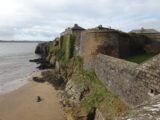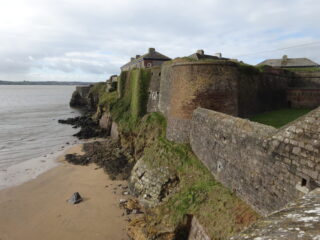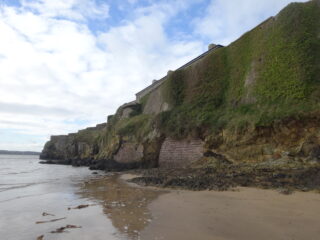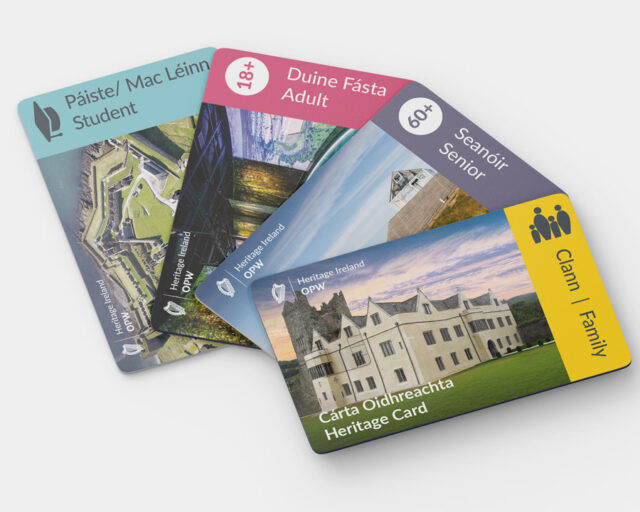Duncannon Fort
Unguided sitesNotice
Duncannon Fort is a state-owned National Monument in the care of the Office of Public Works
*Wexford County Council controls access*
WARNING: It should be noted that these sites are unguided and a level of care and caution should be maintained during all stages of your visit. The Office Of Public Works (OPW) will not be held responsible for any damages, injuries, or losses that occur
Duncannon Fort
The first record of Duncannon is in the foundation charter of Dunbrody Abbey in 1172-77. Duncannon star-fort is strategically situated, jutting out into the estuary of the Rivers Nore, Barrow and Suir. The building of the fort was first mooted in 1551 as a means of supressing piracy and prevent invasion. The threat of Spanish invasion in the 1580’s prompted the construction of 50ft long and 16ft wide rampart in 1587. Outer defences of an 8ft deep trench, 20ft high rampart, stone towers and a drawbridge were added by 1590. By 1611 the rampart was 24ft wide in addition to the now 16ft deep trench, and four gun platforms. Sally ports allowed the garrison access and egress without being seen.
Between 1606 and the 1640’s Sir Laurence Esmonde of Limerick Castle was governor of the fort. With the Irish Rebellion of 1641, the fort was a refuge for Protestants, and was besieged by Confederates from December 1641 to March 1642 and again in 1645. Lord Esmonde surrendered the fort to General Thomas Preston on 19 March 1645. During the Cromwellian campaign the fort was attacked again, with the garrison within suffering from the plague, it capitulated on 17 August 1650. King William of Orange was delayed by bad weather at Duncannon in September 1690. King James II embarked from Duncannon, eventually fleeing to France after the Battle of the Boyne. The fort was renovated in 1724 with a new sea level battery and 18 new heavy guns.
During the 1798 rebellion, the fort was a refuge for loyalists, commanded by Major General Fawcett. The Irish ballad, ‘The Croppy Boy’ depicts the fate of the United Irishmen rebels who were nicknamed Croppy due to their cropped hair. In 1857 the fort was demilitarised. During WWII, the Irish Army occupied the fort and was subsequently used by the FCA (Fórsa Cosanta Áitiúil) into the 1980’s.
Visit Historic Environment Viewer for more information on Duncannon Fort
Protect our Past - Click here to read about the importance of protecting our country’s unique heritage sites
This national monument is protected in accordance with the National Monuments Acts 1930 to 2014



